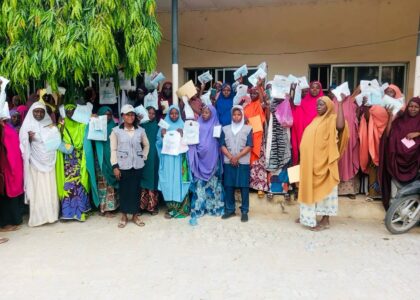
By: Isa Aisha Ushata
Immunization is considered to be one of the most successful and cost-effective public health interventions for human beings against diseases that affect our health. Routine immunization plays a key role in significantly reducing child mortality due to vaccine-preventable diseases. The World Health Organization revealed that immunization has been estimated to prevent 3 million deaths globally every year. A decrease of 84% in the measles mortality rate was recorded worldwide due to measles vaccination. Likewise, a reduction in pertussis mortality was also recorded globally among under-5 children.
Expanded Programme on Immunization (EPI), every child in Africa must receive one dose of Bacillus Calmette-Guerin (BCG), oral polio vaccine (OPV0), and hepatitis B vaccine (HBV1) at birth, Penta1 and OPV1 at 6 weeks of age, Penta2 and OPV2 at 10 weeks of age, Penta3 and OPV3 at 14 weeks of age, and measles and yellow fever at 9 months of age.


Mother’s awareness and wealth status are the major predictors of full immunization coverage. Reasons given for failure to fully immunize children are obstacles, lack of motivation, lack of information, and community factors.
Zero-dose refers to a person who does not receive a single dose of any vaccine in the routine national immunization schedule, while missed dose refers to a person who does not complete the schedule. These people remain vulnerable to vaccine-preventable diseases and are often already disadvantaged due to poverty, conflict, and lack of access to basic health services. Globally, an estimated 22.7 million children are on zero or missed doses, with Nigeria accounting for 3.1 million (14%).
Passive immunization is indicated in patients who cannot form antibodies, such as the immunocompromised. It is also indicated when the disease may develop before active immunity can develop antibodies, such as in a patient exposed to rabies. In this instance, the patient may develop rabies before active immunization effectively creates antibodies.
Patient and parent barriers to immunization are: parents may lack knowledge about childhood vaccinations, have unreasonable fears about vaccine safety, or lack transportation. They may not be aware of the threat of vaccine-preventable illnesses or that safe and effective vaccines are available against these diseases. In rural clinics, there should be supportive staff, convenient office hours, and a limited wait time for immunizations, which will contribute to fully immunized children and also reduce the high rate of morbidity and mortality among children.
There is still room for improvement in the successful prevention of severe infectious diseases through vaccination among adults and children. Coverage rates for pneumococcal and influenza vaccines are substantially below the Healthy People targets of 90%. Recommendations for improving vaccine rates among adults Recommendations for maintaining and improving vaccination, the work, involving a collaboration of experienced and dedicated physicians, basic researchers, nurses, laboratory staff, and support staff, has greatly contributed to the development of new vaccines and developing the basic science necessary for vaccines of the future. In addition, efforts to determine how to accomplish optimal vaccination coverage in targeted populations must also continue.





